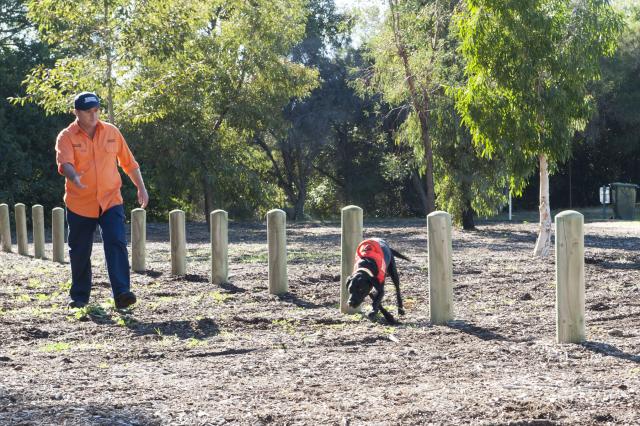Western Australian detections
In 2013 an exotic ant species was collected at the Perth Airport by Commonwealth biosecurity officers as part of routine surveillance. The infested area, including a 50 metre buffer zone, was identified as 60 hectares.
Browsing ants were subsequently detected in 2014 at Belmont. This was a separate but linked infestation as the ants may have been introduced to the Belmont site via freight from the Perth Airport site.
The infestations at Perth Airport and Belmont were treated with granular baits containing an insect growth regulator designed to sterilise the queens. This treatment has been customised to attract browsing ants and was broadcast across the infested area, followed by a spray treatment two weeks later. Area freedom was declared for the Perth Airport and Belmont in 2016 and 2017 respectively.
Further browsing ant detections were made in Welshpool and Kewdale in 2017, and two browsing ants were detected in Bullsbrook in 2018.
Eradication and surveillance was carried out at Welshpool, Kewdale and Bullsbrook over a two year period with odour detection dogs, and no browsing ants were detected. Clearance surveillance at the three sites was performed in January 2020.
New WA detections
In early 2020 browsing ants were detected in Bayswater and new sites in Welshpool, these detections were linked to known infestations. These sites are currently undergoing treatment, surveillance and tracing activities.
There have also been detections in new areas, Fremantle Port in 2019 and East Rockingham in 2020. Eradication and surveillance is underway in these areas.
Northern Territory detection
A browsing ant detection at Darwin seaport was confirmed in 2015. The National Browsing Ant Eradication Program, tasked with eradicating browsing ant from Western Australia and the Northern Territory, was established in December 2015.
There have been 23 infested premises discovered in Darwin, comprised predominantly of transport and logistics companies that transfer industry equipment and containers. Eradication in the Northern Territory is underway.
Queensland detection
A small infestation of browsing ant was detected at the Port of Brisbane in 2019. Eradication operations are underway, with response activities funded by a national cost-shared arrangement approved by the National Biosecurity Management Group.
Biosecurity and ongoing surveillance
Browsing ant has been declared a pest of national significance by the Australian government. Therefore movement restrictions may apply at infested sites to prevent the transport and spread of this pest. Compliance with these movement restrictions are critical because the further this ant spreads, the harder it is to eradicate.
Following eradication activities, surveillance will be undertaken to detect if there are surviving browsing ants. Eradication may be declared after a two-year period with no evidence of surviving colonies.
In Western Australia, the Northern Territory and Queensland, all known infested areas have been treated and surveillance is continuing until area-freedom can be announced.

